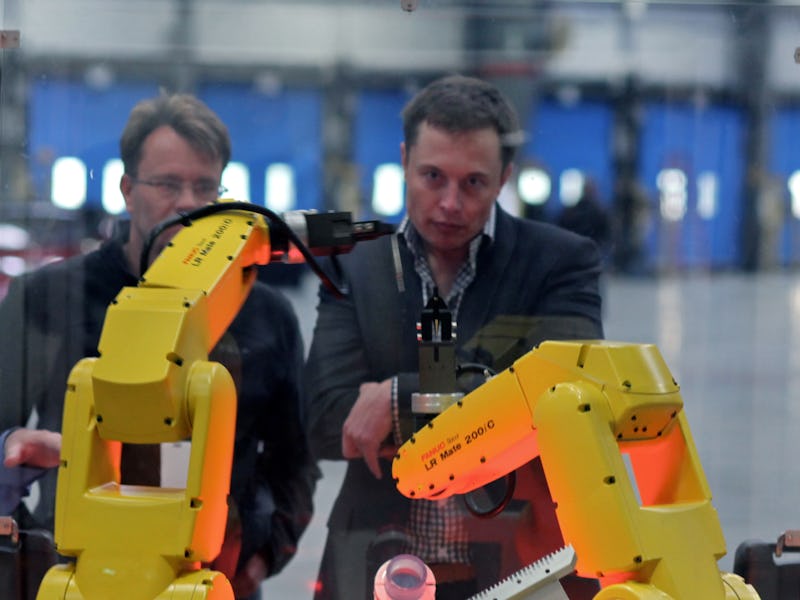Few things are more fun to binge on YouTube than compilations of robots tripping, falling over, and crumpling to the ground. They’re fun, gentle reminders that the robot revolution is still pretty far away and humanity is safe for now — our robot overlords will need to figure out how to stand before we can kneel before them.
But don’t worry, Elon Musk is on the case. His A.I. research organization just fixed up their robot simulation software.
Since its launch in April 2016 by OpenAI, a Musk-founded nonprofit dedicated to furthering A.I. research, OpenAI Gym has provided developers with a way to simulate robots navigating various environments and to test their A.I. algorithms.
On Monday, OpenAI announced on Twitter that they had launched Roboschool, an update to the OpenAI Gym that could better prepare robots for the real world.
OpenAI’s ultimate goal is to develop a true Artificial General Intelligence, or a machine that has the full cognitive and emotional capabilities of a human. This is the sort of A.I. we see in science fiction: thinking, feeling machines that only differ from humans because they’re made of metal. Most A.I. that’s out there today is focused on small, specific jobs, but the goal of A.G.I. is to be all-encompassing. OpenAI sees the improvements to their software bundle as an important next step towards that goal.
Along with some more fun components — like developing software to beat the high score on some old Atari games — Open AI Gym can be used to see how various simulations of robots will fare under different circumstances, like running along a track. Some people developed a way to extend their simulations into the realm of physical robots navigating the real world, which let them use their software in actual machines.
With the launch of Roboschool, the simulated environments are more realistic and applicable to actual robos. With Roboschool comes an upgrade to OpenAI’s physics engine, so more variables and constraints can be introduced. The tracks that simulated robots had to walk along now exist in three dimensions, and the robots have to balance in spite of more forces, such as the torque generated by their own legs.
While Roboschool may lead to more advanced machines like that Boston Dynamics robot that stays upright when you kick it, there’s still plenty of time to point and laugh while the machines try to learn. Just check out this Roboschool environment called “HumanoidFlagrunHarder,” where the simulation has to find and run to an ever-changing goal while being pelted by projectiles.
